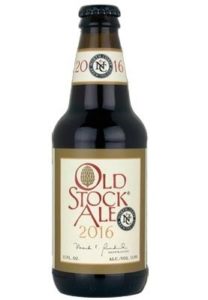Top 10 Old Ales Brewed in North America
The best old ales are dark amber to brown in color. These ales are medium to full-bodied with a malty sweetness. Hop aroma should be minimal and flavor can vary from none to medium in character intensity. Fruity-ester flavors and aromas can contribute to the character of this ale. Bitterness should be minimal but evident and balanced with malt and/or caramel like sweetness. Alcohol types can be varied and complex. A distinctive quality of these ales is that they undergo an aging process (often for years) on their yeast either in bulk storage or through conditioning in the bottle, which contributes to a rich and often sweet oxidation character. ABV: 6.30% – 9.10%. IBU: 30-65.

1. Old Snaggletooth – Foxhole Brewhouse – Minnesota
2. 10&2 Barleywine – Fifty West Brewing – Ohio
3. Old Stock Cellar Reserve – North Coast Brewing – California
4. Heini’s Good Cheer – Roundabout Brewery – Pennsylvania
5. Vintage 2016 – Fortnight Brewing – North Carolina
6. Beer 101 Strong Ale – NC Teaching Brewery – Ontario
7. Olde Ale – AleSmith Brewing – California
8. Old Stock Ale – North Coast Brewing – California
9. Curmudgeon Old Ale – Founders Brewing – Michigan
10. Pilgrim’s Dole – New Holland Brewing – Michigan